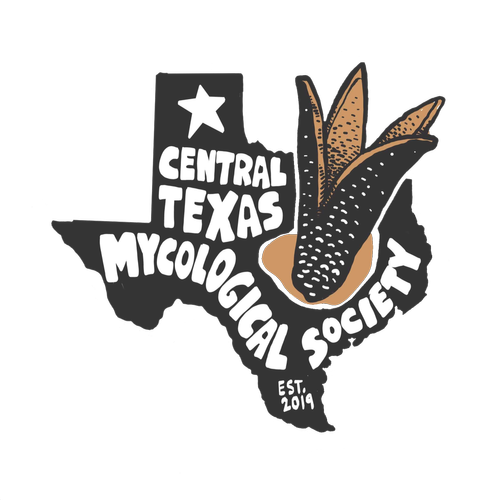August Mushroom of the Month: Blushing Rosette, Abortiporus biennis





🍄⭐The August mushroom of the month is the Blushing Rosette, Abortiporus biennis
👏 Congrats to Sophia for guessing it right and winning a membership to the society! 🎉
You can also be a supporting member to stay dialed-in with events & discover next month’s mystery mushroom.
Blushing Rosette
Abortiporus biennis — the blushing rosette - is a rare but charismatic bracket fungus that has a soft spot for our local oak and elm trees. Around East and Central Texas, you might spot it fruiting in spring or fall, usually on dead or dying branches. Its brackets are semicircular to kidney-shaped, with a smooth, velvety top and a pore surface that glows white to cream.
Two distinct forms of Abortiporus biennis can be encountered: a "normal" looking, regular sort of polypore with a brown cap and a whitish pore surface that bruises reddish to reddish brown—and a gnarled, messy-looking, "aborted" form that consists of a mass of irregular white pores that exude a reddish juice and bruise reddish brown; in this form there is hardly a cap or a stem to speak of, and as the mushroom grows it often engulfs sticks and blades of grass.
A Tricky Taxonomy
Taxonomists have had quite the time with Abortiporus. There are at least 55 different names it’s gone by — a mix of species and genus labels — thanks to its wildly different forms. They can look so unlike each other (and unlike other polypores) that early mycologists kept thinking they’d discovered something new. To make matters even more interesting, Abortiporus biennis produces both sexual spores and asexual chlamydospores, which led to its anamorphic forms getting their own separate names.
Why We Love It: This is a fungus with a serious flair for disguise. It’s a living example of why mushroom ID can be equal parts science, art, and wild goose chase — and we’re here for it.
Tips for ID
Cap: 5–15 cm across; roundish-to semicircular, kidney-shaped, or irregular in outline; planoconvex; finely to thickly velvety, or sometimes more or less bald; dry; light brown to reddish brown or tan, with a pale margin; sometimes with concentric zones of brown shades.
Pore Surface: Whitish, bruising and discoloring reddish or pinkish brown; pores appearing "stuffed" when young, later angular to maze-like or irregular, 1–4 per mm; tubes to 5 mm deep.
Stem: When present 3–10 cm long; 1–3 cm thick; lateral; tapering to base; soft and spongy; fuzzy; brownish.
Flesh: White to pinkish or pale tan; exuding a pinkish juice when squeezed; tough.
Odor: Fragrant or, often, somewhat foul.
Chemical Reactions: KOH on flesh negative to pale brown.
Spore Print: White.
